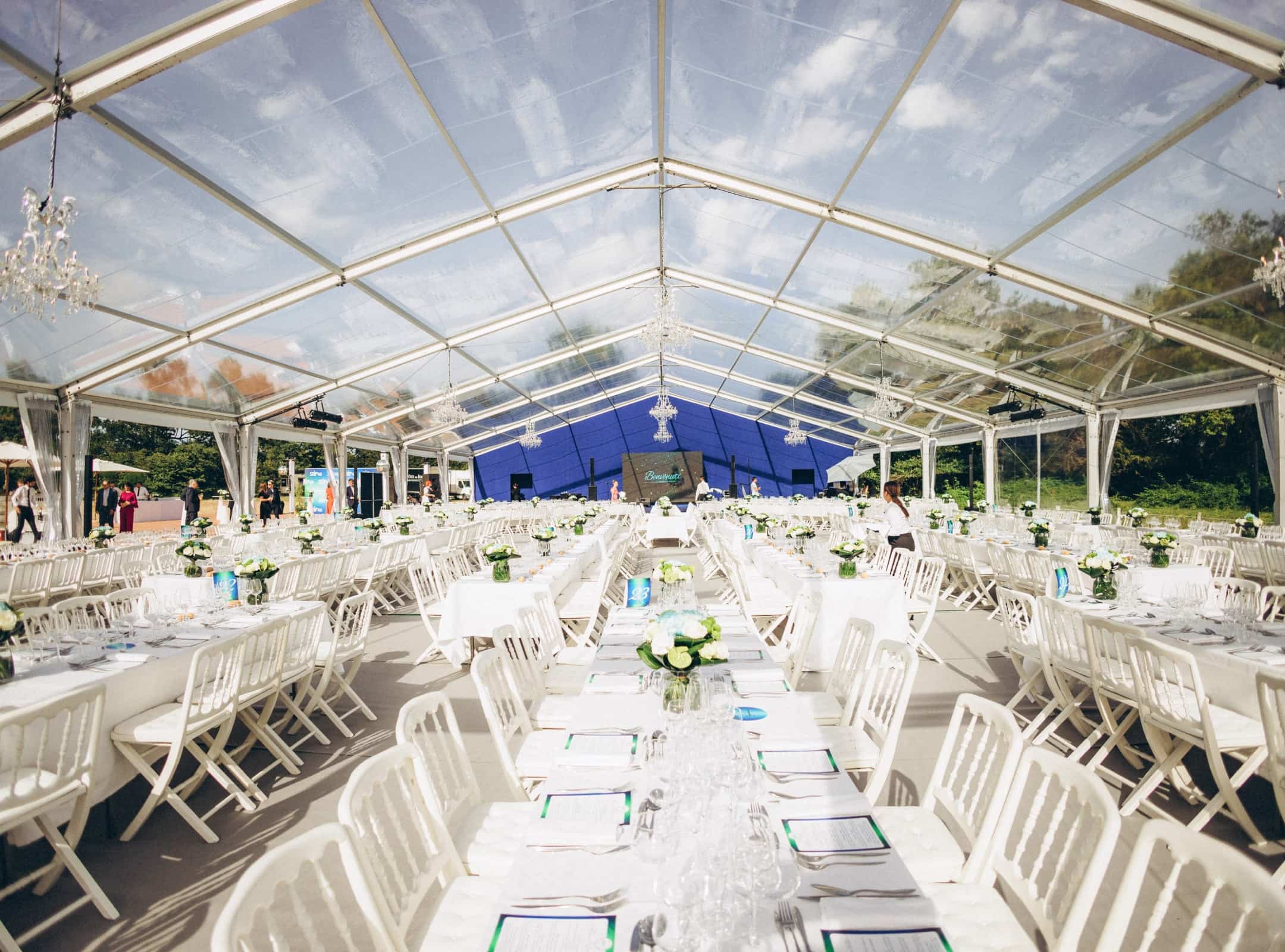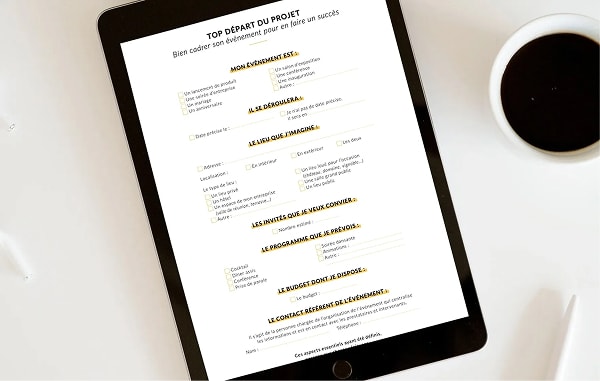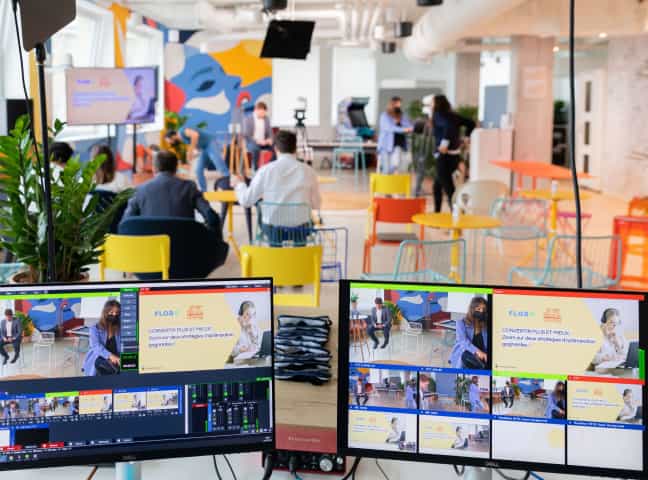In professional event management, timing should never be taken lightly. It’s a decisive lever for ensuring the success of a seminar, product launch, or client cocktail. Missing a delivery date, overlooking a permit, or reacting too late to a technical constraint can throw off the entire event. Even the most experienced agencies know it: a successful event always relies on clear reverse planning, well-set milestones, and perfect anticipation of potential setbacks. Planning a corporate event? This guide gives you everything you need to leave nothing to chance: a clear roadmap, practical tips, and a checklist to help you move forward step by step, at the right time.
What factors influence planning deadlines?
It’s hard to give a one-size-fits-all answer to the question “How long does it take to organize a professional event ?” Everything depends on the type of event, its size, its location, and the desired level of complexity. Several key factors come into play, which we outline below.
The type of event
A casual team dinner doesn’t require the same planning as a 300-guest product launch. The more strategic, visible or public the event is, the more time it will require : program design, scenography, coordination with providers, content validation... These steps often take weeks or even months of preparation.

The number of participants
Again, size directly impacts timing. A small-scale event can be organized in just a few weeks. But once you go beyond 100 guests, logistics become more complex : flow management, signage, parking, security, furniture supply, and so on. You’ll need more lead time to ensure the event runs smoothly on the big day.

The venue
Your venue choice is crucial. A fully equipped space (reception hall, rooftop, etc.) makes setup faster. On the other hand, a bare site or an unusual location usually requires temporary infrastructure: tents, flooring, power, heating, sanitary facilities, etc. These setups extend the timeline, especially for technical studies, administrative requests, or validation stages.
Technical complexity
Some installations require genuine logistical know-how : an elevated stage, video mapping, a mobile kitchen, or suspended decor, for instance. The more ambitious the technical setup, the earlier your team will need to begin preparation and coordination.
Approvals and permits
Last but not least : internal approvals and regulatory procedures. These often take the most time. Between back-and-forth with management, legal adjustments, marketing validations, and temporary public space occupation requests, the process can quickly get longer. It’s safer to allow for extra time to avoid last-minute surprises.
👉 Read also : The role of corporate event planners
A sample reverse planning for your professional event
Here’s a rough timeline to help you organize a professional event with peace of mind. Every project is unique, of course, but this framework works for most formats with 80–100 guests or more.
6 to 3 months before the event
- Define event goals ;
- Build the budget ;
- Select the venue and set the date ;
- Identify and book key providers: structure, catering, technical services.
3 to 1 month before the event
- Design the scenography ;
- Order furniture, decor, tents or marquees ;
- Validate technical plans (power, guest flow, etc.) ;
- Coordinate with all service providers.
1 month to 1 week before the event
- Site visit with main providers ;
- Final logistics adjustments (access, deliveries, parking, safety) ;
- Finalize documents (permits, layout plans, detailed schedule);
- Final briefings with internal and external teams.
7 days to the day of the event
- Begin installations (structure, flooring, furniture) ;
- Technical tests (lighting, sound, power supply) ;
- Last scenography adjustments ;
- Final setup and guest welcome preparation.
Checklist of priorities to address early
Some decisions must be made in the first few weeks of planning:
- The venue and associated permits (especially in public spaces or ERP) ;
- Temporary structures : tents, marquees, flooring, terraces ;
- Furniture and decor : tables, seating, signage, coverings ;
- Lighting and heating : essential for outdoor events or depending on the season ;
- Key providers : catering, DJ, photographer, security team ;
- Safety and accessibility : wheelchair access, evacuation plan, fire extinguishers.
👉 Read also : How does Atawa facilitate the organization of high-end corporate events ?

Planning mistakes to avoid
Here are some common pitfalls we see often and that can be costly :
- Starting too late : each year we get last-minute requests in May for tents... for June events. The result: limited choices, less flexibility, and higher costs.
- Overlooking site constraints : sloped ground, unpredictable weather, or tight access points can completely change a project. A seemingly simple space might require a technical study.
- Skipping the site visit : site visits reveal red flags (slopes, missing power outlets, truck access) and are essential for mapping out guest flows, signage, and the overall experience.
- Poor coordination between providers : for example, if the furniture arrives before the flooring is installed, it disrupts the entire setup. That’s why at Atawa, we handle full coordination from quote to dismantling.
Organizing a professional event requires true mastery of timing. Anticipating each step, coordinating the right providers at the right time, and adapting to the site's constraints, without ever losing sight of the guest experience, is the key to a successful event.
Do you have a professional event in mind ? Let’s talk now to define the key steps and set the right timeline together.
Ile-de-France・Centre-Val de Loire
01 79 75 89 87
Provence-Alpes-Côte d’Azur・Corse
04 84 49 62 64
Nouvelle-Aquitaine
05 35 54 59 88
Hauts-de-France・Normandie
03 74 09 83 62
Bretagne・Pays de la Loire
02 57 64 07 94
Grand-Est・Bourgogne
03 52 74 06 68
Auvergne-Rhône-Alpes
04 28 29 61 35
Occitanie
05 82 95 39 28
Switzerland
+41 076 504 33 02

subtitle
Product name
Discover the Atawa Guide
The Atawa Guide is the new essential tool for organizing your events: from launching your project to bringing it to life, no detail has been overlooked to ensure your event's success.





